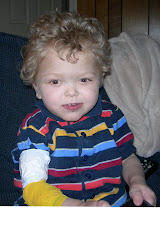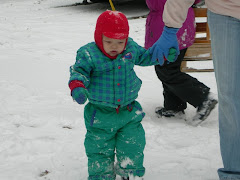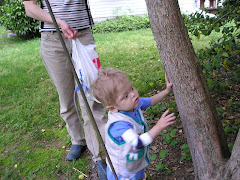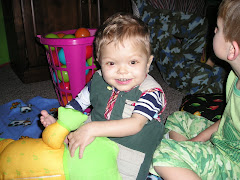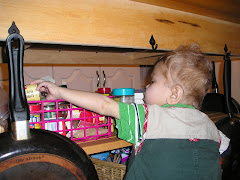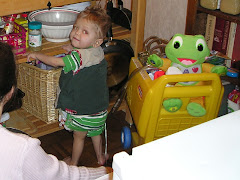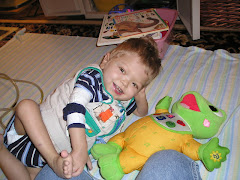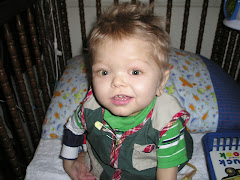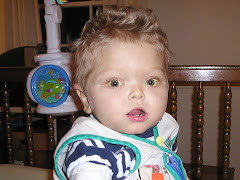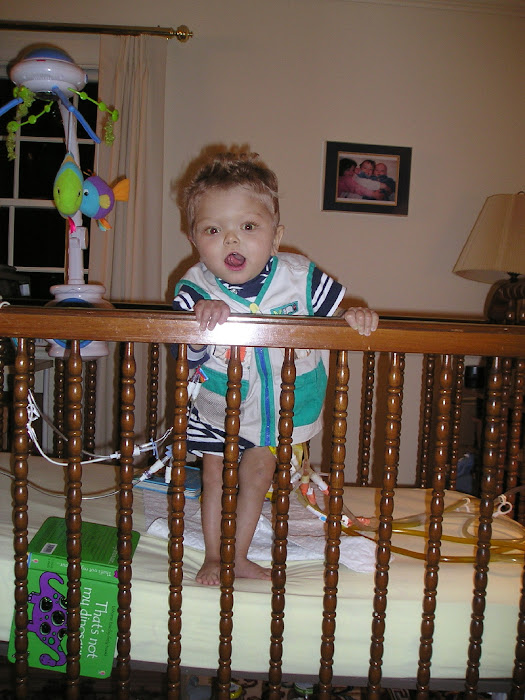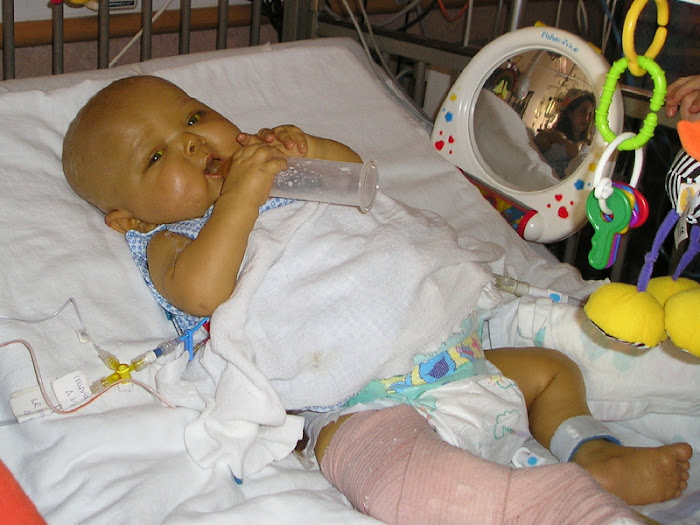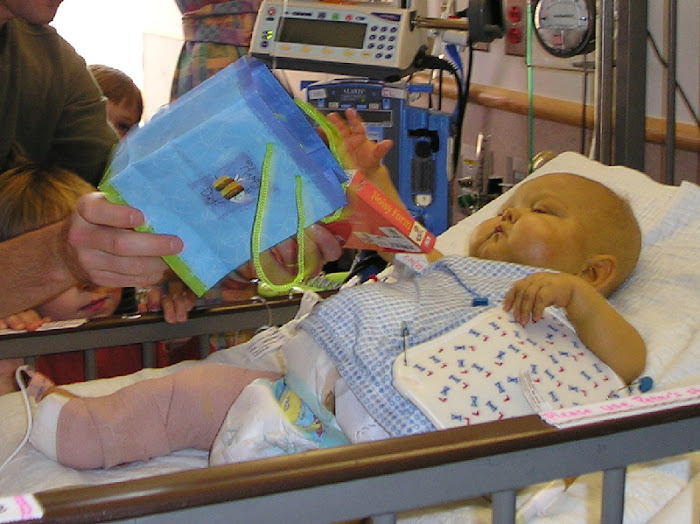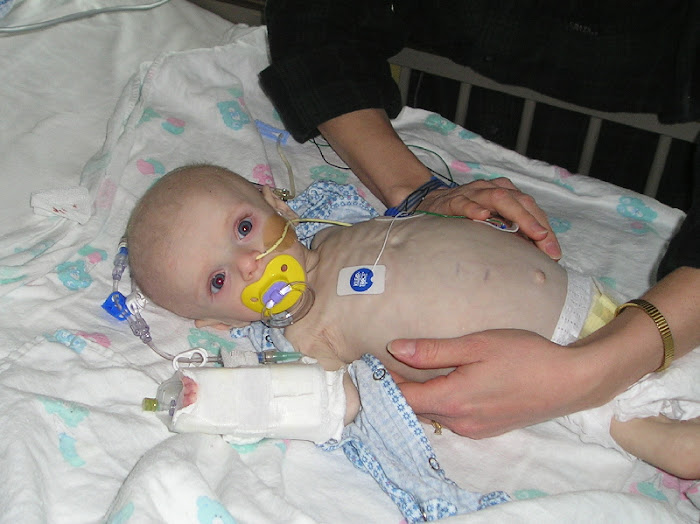We were discussing dinner plans in the morning and Peter overheard us say that we would have hamburgers for dinner. He piped up, "Can I have a cheeseburger for dinner?" To put this in context as to why this would stand out for us, Peter's dinners consist of Stage 1 Gerber baby meat, a pureed vegetable, and a token amount of crackers/Cheerios/chips/other table food. This request was an unusual one for him. It is also one of the wishes that I have had for him for the past couple of years... to see his ability to eat expand so much that I will one day see him eat a burger.
Of course we said that we would make him a cheeseburger, and went on with the morning. Several times throughout the day he remarked that he wanted his very own cheeseburger, so I started thinking about how to make that happen. Usually we will give him a piece of what he asks for and he will lick it, taste it, nibble it, and maybe eat it. I didn't know what he would do with a whole burger, but did wonder what he would do with a whole burger too. As dinnertime approached, it hit me that I could make a tiny one and use part of a hotdog bun to make a slider-sized cheeseburger. Peter was so excited about this that he volunteered to set the table too.
Dinner came and he wanted ketchup and mustard on the burger. He examined the burger, then held it up and took a bite out of it. We were all on the edges of our seats, camera out. He loved the burger! Being short-gut, on TPN 7 nights a week, with limited food intake which is mostly pureed or liquid, he only ate about 1/4 of the burger, but he absolutely enjoyed himself. We told him we would save the leftover part for him and we did. The next morning he asked for that burger again and ate another 1/4. Lunchtime came and he wanted it again. In the end, he ate almost all of that burger.
Dinner
Breakfast
Lunch
He hasn't asked for another burger yet, but has gone on to try a little bit of ham, kielbasa with seeded mustard, hotdog with ketchup and mustard, and the Indian spinach dish, palak paneer. Boy do we get a kick out of him eating.... medical grade formula, baby food, and then break out the seeded mustard and kielbasa. His feeding therapists who worked with him from last Spring through late Fall, have enjoyed hearing of his new conquests as well.






